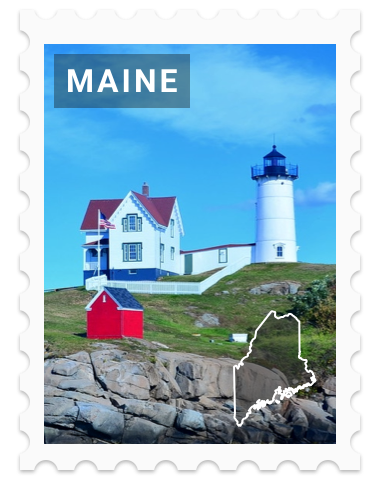Destination List > Acadia National Park
Acadia National Park
Photo by laredawg
Kid Rating:




The history...
Acadia National Park, located in Maine, just southwest of Bar Harbor, is an amazing place to explore. It covers about half of Mount Desert Island, along with some nearby smaller islands and a part of the Schoodic Peninsula on Maine's stunning coastline.
This beautiful park got its start as Sieur de Monts National Monument back in 1916, thanks to President Woodrow Wilson. Soon after, in 1919, Congress changed its name to Lafayette National Park, making it the first national park east of the Mississippi River and the only one in the Northeastern United States. It got its current name, Acadia National Park,
The land where Acadia sits is rich with history, having been home to Native Americans of the Algonquian nations for about 12,000 years. When European ships arrived in the 1600s, they traded furs with these communities. Since 1989, the Wabanaki Confederacy has celebrated Native American culture every year with a festival in Bar Harbor.
The island was named Isle des Monts Deserts (meaning "Island of Barren Mountains") by explorer Samuel de Champlain in 1604. Over the years, it changed hands between France and England. "Rusticators," or summer visitors, discovered its charm in 1855, followed by wealthy "cottagers."
The park itself was a vision of Charles Eliot, supported greatly by George B. Dorr (known as the "Father of Acadia National Park") and Charles W. Eliot. John D. Rockefeller Jr. helped build scenic carriage roads from 1915 to 1940. Sadly, a wildfire in 1947 damaged part of the park and destroyed some luxurious homes.
Acadia's landscape is diverse and breathtaking, featuring mountains, a rugged coastline, lush woods, lakes, ponds, and unique wetlands. On Mount Desert Island, you can find Cadillac Mountain, the highest peak on the eastern coast, offering spectacular sunrise views. There's also the dramatic Thunder Hole, where waves create a loud splash, and the soothing Sand Beach for swimming.
Jordan Pond is known for its scenic North and South Bubbles, and Echo Lake has a refreshing freshwater swimming spot. Somes Sound is a scenic fjard, a long inlet shaped by glaciers, while Bass Harbor Head Light provides a charming coastal view.
The park is a sanctuary for wildlife, including 37 kinds of mammals like black bears and moose, seven types of reptiles, eleven amphibian species, 33 fish species, and as many as 331 bird species. Peregrine falcons, which returned to nest successfully in 1991 after a long absence since 1956, are a special highlight here. Some trails might be closed in spring and early summer to protect their nesting.
Visitors have a lot to enjoy between spring and autumn, from touring by car or bus along scenic roads to hiking, biking, and horseback riding on carriage paths. There's also rock climbing, kayaking on lakes, and swimming at Sand Beach and Echo Lake. Ocean activities include sea kayaking and guided boat tours.
In winter, you can try cross-country skiing, snowshoeing, snowmobiling, and ice fishing. There are several campgrounds, and the main visitor center is located at Hulls Cove, handy for starting your adventure.







